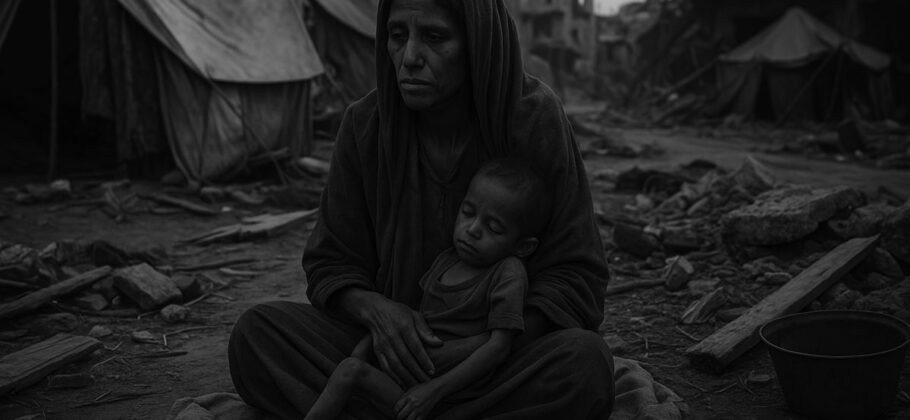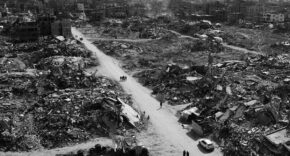A new report by the World Bank has delivered a sobering message about the future of the world’s most vulnerable populations. According to the report, extreme poverty is increasingly concentrated in countries suffering from armed conflict and political instability. The number of people living in desperate conditions is climbing quickly, and experts warn that without urgent action, the situation will spiral even further out of control.
Conflict and Poverty Are Becoming Tightly Linked
The World Bank’s research shows that 39 countries are now classified as fragile or affected by conflict. These nations are spread across the globe, including Afghanistan, Nigeria, Sudan, Syria, Ukraine, and Yemen. In total, these 39 economies are home to more than one billion people.
According to the report, about 421 million people in these countries survive on less than three dollars a day. That figure already accounts for more than half of the world’s extreme poor and is expected to rise to 435 million by 2030. This would mean that nearly 60 percent of the global population living in extreme poverty will be in conflict-affected countries.
Indermit Gill, the World Bank’s chief economist, explained, “Half of the countries facing conflict or instability today have been in such conditions for 15 years or more. Misery on this scale is inevitably contagious.”
The Human Costs Are Devastating
Armed conflicts do more than destroy infrastructure and disrupt economies. They also have severe and lasting impacts on health, education, and life expectancy. The World Bank’s report found that in these conflict countries, life expectancy is five years shorter than in other developing nations. Infant mortality rates are double what they are elsewhere.
The education gap is also alarming. People living in conflict-affected countries receive an average of six years of schooling, compared to nine years in other low- and middle-income nations.
Since the start of the century, the number of conflicts and the fatalities they produce have climbed rapidly. The report noted that from 2000 to 2004, there were about 50,000 conflict-related deaths each year. That number dropped between 2005 and 2008 but began to rise again after the financial crisis forced many nations to cut back on welfare and education programs.
The trend has only worsened in the past decade. The World Bank reported that the average annual number of conflict-related deaths has reached nearly 200,000. In 2022, fatalities exceeded 300,000.
“For the last three years, the world’s attention has been on the conflicts in Ukraine and the Middle East, and this focus has now intensified,” Gill said. “Yet more than 70 percent of people suffering from conflict and instability are Africans.”
Economies Are Falling Far Behind
The economic effects of war are staggering. On average, countries involved in high-intensity conflict, where more than 150 people per million die each year, experience a 20 percent drop in per capita gross domestic product over five years.
For example, in 2024, economic output in the West Bank and Gaza shrank by 27 percent. In countries like the Central African Republic, South Sudan, and Syria, GDP per person has been cut in half over the course of long-running wars.
The report pointed out that this stagnation has created a massive gap between conflict countries and other developing nations. While GDP per capita in stable developing countries has more than doubled since 2010, rising to about $6,900, the figure has remained stuck at $1,500 in conflict-affected economies.
Since 2020, per capita income in these fragile states has declined by 1.8 percent each year. In contrast, other developing economies have grown by nearly 3 percent annually during the same period.
M. Ayhan Kose, the World Bank’s deputy chief economist, emphasized, “Economic stagnation rather than growth has been the norm in economies hit by conflict and instability.”
The growing poverty crisis is also driving hunger to alarming levels. The report estimated that 18 percent of the population in these 39 countries, about 200 million people, are experiencing acute food insecurity. In other low- and middle-income nations, the figure is closer to 1 percent.
Civil wars and regional conflicts have destroyed farms, disrupted food distribution, and forced millions of people to flee their homes. Without reliable access to food, communities are becoming more vulnerable to disease and malnutrition.
In many places, young people have few options besides joining local militias or armed groups. The report noted that fewer than half of the 270 million working-age adults in these countries have formal employment.
Although the outlook is bleak, the World Bank stressed that countries can recover from prolonged conflict. The report cited examples such as Nepal, Bosnia and Herzegovina, Rwanda, and Sri Lanka, where stability and growth eventually returned.
The fragile countries also hold potential advantages. Many have rich reserves of natural resources, including minerals essential for renewable energy technologies, as well as large populations of young, working-age people.
“Some of them are very rich when it comes to their tourism potential,” Kose said. “But you need to have security established. You and I are not going to go and visit these places unless they are safe, even though they might be the most beautiful places in the world.”
Experts warn that international assistance is essential to break the cycle of conflict and poverty. However, many wealthy nations have scaled back foreign aid in recent years.
Gill observed that with the world becoming more dangerous, rich countries are prioritizing military spending and defense over development assistance. This leaves fragile economies without the funds needed to rebuild institutions, repair infrastructure, and restore basic services.
“The global community must pay greater attention to the plight of these economies,” Kose urged. “Jumpstarting growth and development here will not be easy, but it can be done—and it has been done before. With targeted policies and stronger international support, policymakers can prevent conflict, strengthen governance, accelerate growth, and create jobs.”
The World Bank’s report is a reminder that without action, conflict will continue to trap millions in poverty and hunger, widening the gap between these nations and the rest of the world.
FAM Editor: “Experts” always call upon “rich countries” to provide money to solve problems in poor countries, and yet they never seem to have actual solutions. The undercurrent of wealth redistribution advocacy in the U.N. and other international organizations seems to primarily benefit the U.N. and these other organizations. Perhaps the U.N. should get off its collective rear end and attempt to solve conflicts without attempting to create a welfare state supported by rich countries. Maybe they are just not smart enough.





